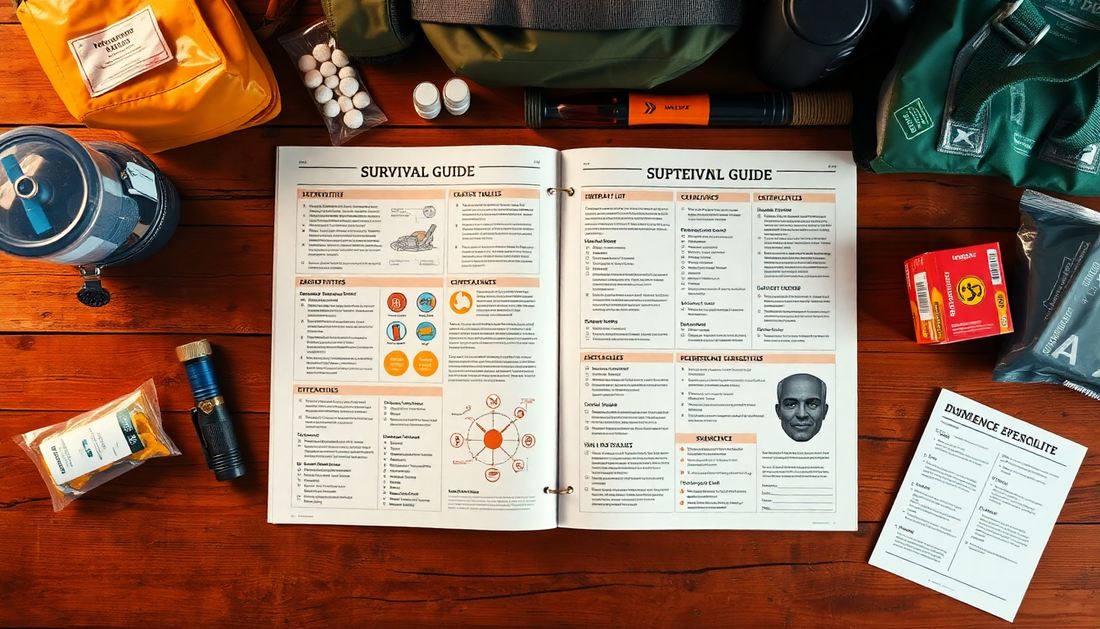
The Ultimate Beginner's Guide: How to Build Your First 72-Hour Emergency Kit
Share
In today's unpredictable world, emergency preparedness has become a crucial aspect of responsible living. Whether it's natural disasters, power outages, or unexpected crises, having a well-stocked 72-hour emergency kit can mean the difference between weathering the storm and facing unimaginable hardship. In this comprehensive guide, we'll walk you through the essential steps to build your first emergency kit, ensuring you and your loved ones are ready for any eventuality.
Understanding Emergency Preparedness
Emergencies can strike at any moment, and the ability to respond quickly and effectively can be the key to survival. From severe weather events like hurricanes and blizzards to unexpected power failures and even civil unrest, the need for a well-prepared emergency kit has never been more apparent. By having the necessary supplies on hand, you can ensure that your basic survival needs are met during the critical first 72 hours of an emergency.
During this crucial time, access to essential resources like clean water, non-perishable food, and medical supplies can be limited or even completely unavailable. That's why building a 72-hour emergency kit is a crucial step in ensuring your family's safety and well-being.
Essential Components of an Emergency Kit
When it comes to assembling your 72-hour emergency kit, there are several key components you'll need to consider. Let's dive into the essential items that should be included:
Water and Hydration
Water is the most critical resource in any emergency situation. Aim to have at least one gallon of water per person per day, for a total of three gallons per person in your 72-hour kit. Don't forget to include water purification tablets or a portable water filter to ensure access to clean drinking water.
Non-Perishable Food
Canned goods, dried foods, and energy-dense snacks should make up the bulk of your emergency food supply. Choose items with long shelf lives that require little to no preparation, and don't forget to include a manual can opener and eating utensils.
First Aid Supplies
A well-stocked first aid kit is essential for addressing any medical emergencies that may arise. Include bandages, antiseptic wipes, pain relievers, prescription medications, and any other necessary medical items.
Communication and Lighting
In the event of a power outage, you'll need reliable communication and lighting sources. Pack a battery-powered or hand-crank radio, a flashlight, and extra batteries to ensure you can stay informed and navigate in the dark.
Personal Hygiene and Sanitation
Don't forget to include items like toilet paper, feminine hygiene products, hand sanitizer, and soap to maintain personal hygiene and sanitation during an emergency.
Emergency Documents and Cash
Keep important documents like identification, insurance information, and emergency contact details in a waterproof bag or container. Additionally, have some cash on hand, as electronic payment systems may be disrupted.
Customizing Your Kit
While the essential components we've outlined are a great starting point, it's important to tailor your 72-hour emergency kit to your specific needs and circumstances. Consider factors like the size of your household, the presence of young children or elderly family members, and any special medical requirements.
For example, if you have a family member with a chronic condition, be sure to include any necessary medications, medical equipment, and specialized supplies in your kit. Similarly, if you live in a region prone to extreme weather, you may need to add items like warm clothing, rain gear, or emergency blankets.
Packing and Storage Tips
Choosing the right container for your 72-hour emergency kit is crucial. Look for a sturdy, waterproof, and easy-to-transport option, such as a backpack or a durable plastic bin. Organize your supplies in a way that makes them easily accessible, and be sure to label the container clearly.
When it comes to storage, select a location that is easily accessible, yet protected from potential hazards. A closet, basement, or garage are all suitable options, as long as the kit is stored in a dry, temperature-controlled environment.
Budget-Friendly Kit Building Strategies
Building a comprehensive 72-hour emergency kit doesn't have to break the bank. There are several cost-effective strategies you can employ to assemble your kit on a budget:
- Shop sales and clearance items for non-perishable food and supplies.
- Opt for generic or store-brand versions of essential items.
- Consider DIY solutions, such as making your own first aid kit or emergency lighting.
- Look for pre-made emergency kits that offer good value for the price.
Conclusion
Preparing for the unexpected is a crucial responsibility, and building a 72-hour emergency kit is a vital step in ensuring your family's safety and well-being. By following the guidance in this comprehensive guide, you'll be well on your way to creating a kit that will provide the essential resources you need to weather any storm.
Remember, emergency preparedness is an ongoing process, and it's important to regularly review and update your kit to ensure it remains relevant and effective. Take the time to build your first 72-hour emergency kit today, and rest assured that you're taking proactive steps to protect your loved ones.
